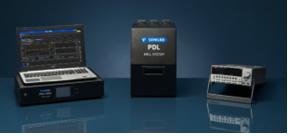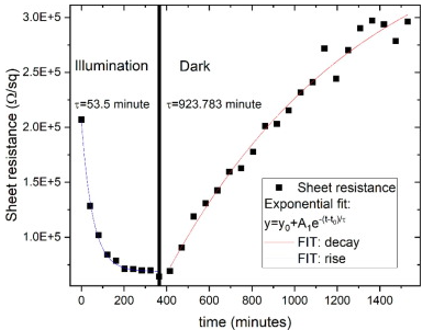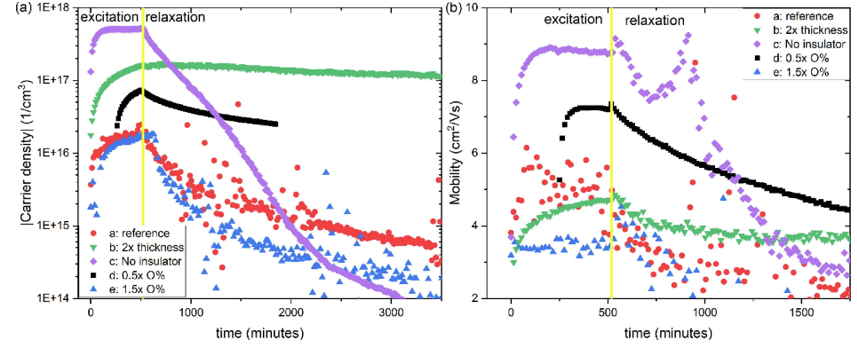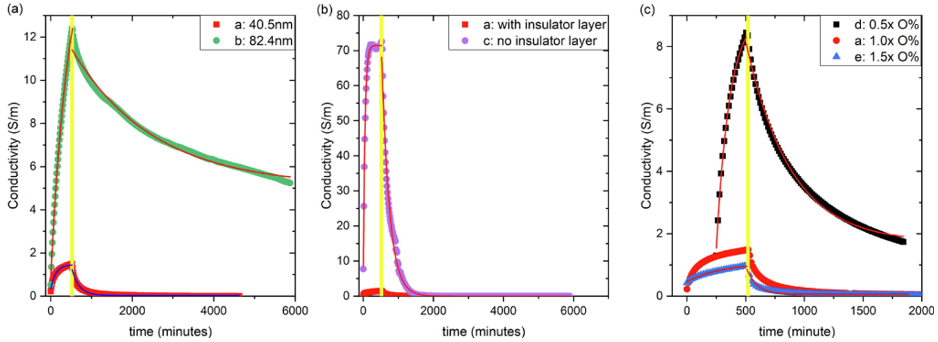Amorphous IGZO (α-IGZO) thin films provide transparency within the visible range of the optical spectrum. Unlike single-crystal IGZO thin films, α-IGZO can be deposited at low temperatures.
Furthermore, α-IGZO demonstrates enhanced electron mobility compared to amorphous silicon, leading to quicker switching in thin-film transistors (TFTs). This article examines persistent photoconductance (PPC) and electron mobility in thin IGZO layers using the Semilab PDL-1000 system.

Figure 1. PDL-1000 system. Image Credit: Semilab Semiconductor Physics Laboratory
Metrology
The Semilab PDL-1000 system is ideal for gauging a semiconductor sample's resistivity, charge carrier density, and mobility.
The remarkable signal-to-noise ratio of the newly developed PDL Hall system ensures reliable Hall measurements for samples with challenging transport properties that are hard to assess using alternative techniques. In the PDL systems rotating permanent magnets are applied to realize the AC Hall measurement at large magnetic field with harmonic modulation in a very compact design
Use Case
α-IGZO thin films, deposited through physical vapor deposition onto a glass substrate, were characterized using the Semilab PDL-1000 system. Different levels of optical excitation were employed to induce photoconductivity within the α-IGZO layer.
The PPC effect introduces complexity to the measurement of these materials, as the properties of the sample can fluctuate over time due to the potentially prolonged photo-induced changes in material properties.

Figure 2. Illustration of the measurement sequence. Image Credit: Semilab Semiconductor Physics Laboratory.
A measurement protocol was established, involving prolonged optical excitation with a UV LED and an extended measurement of the relaxation process (Fig 2.). This permits the observation of both the saturated values of the thin films for better comparison and the measurement of the characteristic decay time of the properties.
To demonstrate measurement reproducibility, measurement of the saturation and relaxation of carrier density, sheet resistance, and mobility in α-IGZO thin films was conducted consecutively three times. A high excitation level ensured swift saturation and prevented potential unnoticed degradation effects.
The charge carrier mobility attained the same maximal value in all three measurement runs. A minor decrease of approximately 10% was observed in charge carrier density, along with a corresponding increase in sheet resistance during successive runs.
Excitation-relaxation cycles were performed to investigate the influence of oxygen ratio, passivation, and layer thickness on charge carrier density, conductivity, and mobility.

Figure 3. Charge carrier density (a) and mobility (b) of the α-IGZO samples during and after optical excitation. Image Credit: Semilab Semiconductor Physics Laboratory
Samples were prepared with varying oxygen concentration levels, thicknesses, and the presence or absence of a silicon oxide layer atop the α-IGZO thin film. The oxygen concentration denoted the amount of oxygen mixed with argon gas during sample preparation, while the silicon oxide layer simulated the effect of a gate insulator.

Figure 4. Conductivity comparison for the three changing parameters. The solid lines represent the fitted exponents. Image Credit: Semilab Semiconductor Physics Laboratory
The results indicated that reducing the oxygen ratio during fabrication significantly boosted charge carrier density and doubled mobility. An increase in sample thickness led to a higher saturated charge carrier density, with mobility remaining relatively constant.
Surface passivation affected charge carrier mobility and the dynamics of the persistent photoconductivity effect, resulting in lower conductivity, carrier density and mobility values for the passivated sample.
Materials and Structures
TFT materials: IGZO, Indium Zinc Oxide (IZO), Aluminum Zinc Oxide (AZO), etc., deposited on Si or glass substrate.
SEMILAB Publication
A. Bojtor, G. Paráda, P. Tüttő, H. Korka, K. Szőke, F. Korsós, “Investigation of persistent photoconductance and related electron mobility in thin IGZO layers with the PDL Hall technique” in Science Direct, 24 May 2023, doi: 10.1016/j.matpr.2023.05.143.

This information has been sourced, reviewed and adapted from materials provided by Semilab Semiconductor Physics Laboratory.
For more information on this source, please visit Semilab Semiconductor Physics Laboratory.